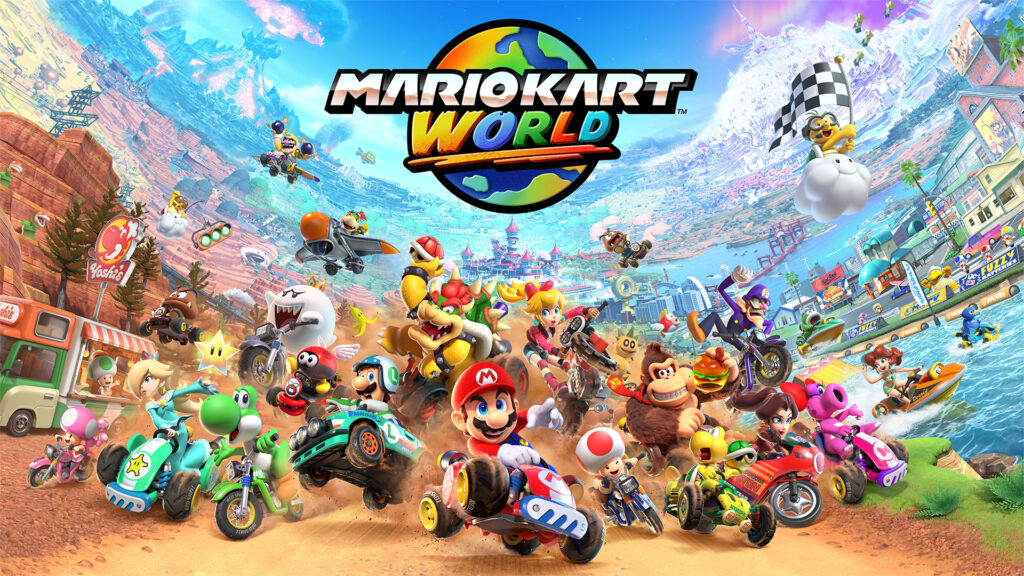Launching a new Mario Kart game, Mario Kart World, as a launch title for Nintendo Switch 2 is an effortless way to sell a new console. Even the most casual gamers have experience with the series, a staple on every Nintendo console since Super Mario Kart on the SNES. Many, including myself, would consider Mario Kart 8 Deluxe to be the best Mario Kart game ever released, brimming with content, exceptional tracks, and accessible mechanics that allowed the most inexperienced gamers to participate. Towards the end of Nintendo Switch’s life, I pondered, “How can they top Mario Kart 8 Deluxe? Is it even possible?”.
With Mario Kart World’s announcement at the beginning of the year, an open-world Mario Kart game seemed like a warranted shakeup of the franchise, which has remained safe gameplay-wise for the last 12 years, since Mario Kart 8 was released on Nintendo WiiU. Having previewed Mario Kart World a month before launch, I had the opportunity to check out the Grand Prix mode and the brand-new Knockout Tour mode. My experience coming out of this was extremely positive, prompting me to state, “Mario Kart World looks to rival the likes of Mario Kart 8 when it comes to talking about the best Mario Kart title,” a statement that I could very well retract after spending time in its half-baked open world.

Mario Kart World returns to the core gameplay of Mario Kart 8, trading in the anti-gravity racing for some fully sick tricks in the form of rail grinding and wall driving. The game, thanks to the upgraded hardware of Switch 2, brings gamers the best-looking and best-sounding Mario Kart game to date. Hearing the engines roar in unison at the beginning of a race, shells rattling around the course as you dodge and weave the chaos in the new 24-racer races, evokes that manic thrill that only a Mario Kart game can deliver.
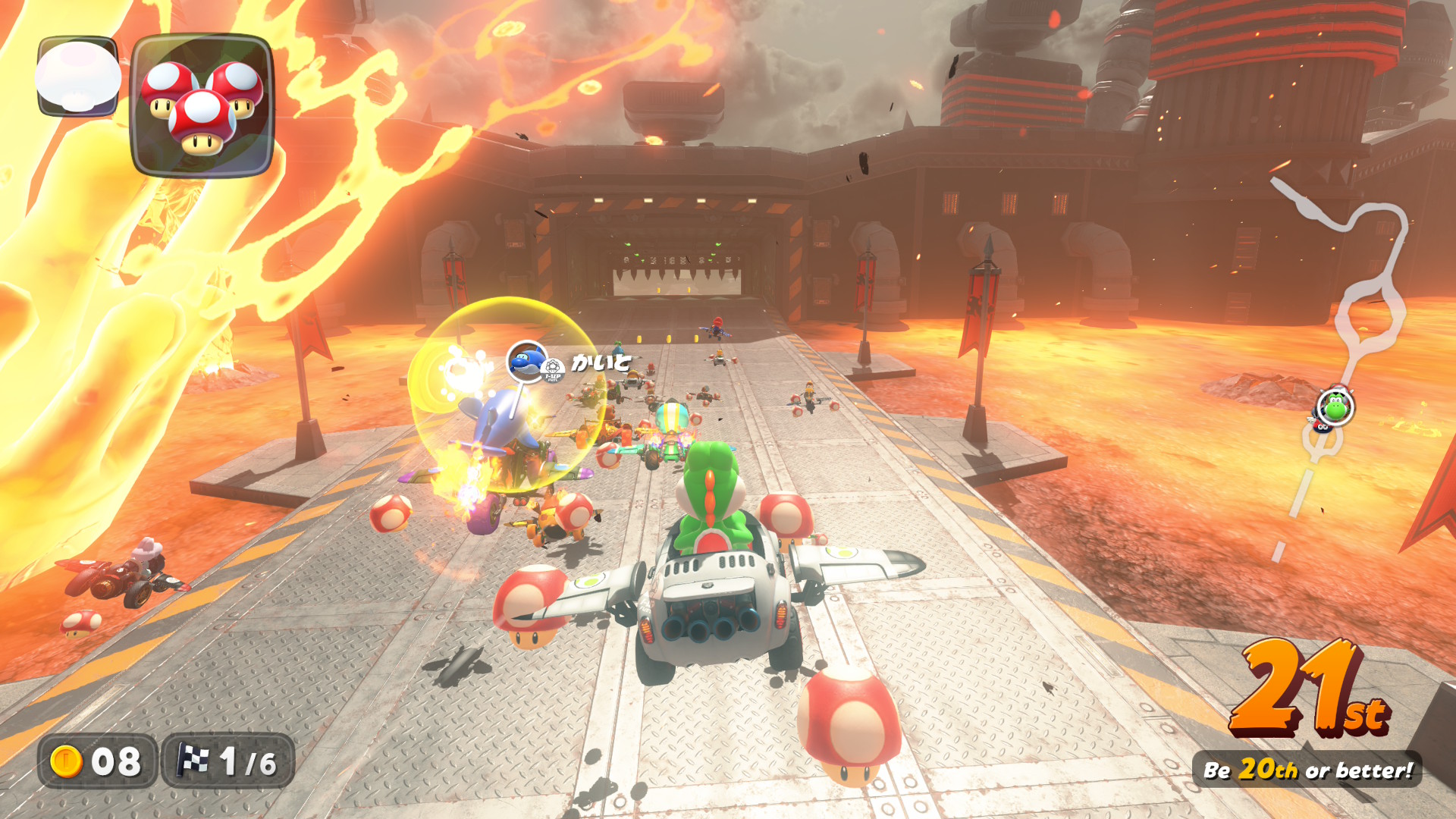
The game brings with it a slew of brand-new tracks as well as remixed tracks from past titles. Mario Kart World succeeds in providing a diverse and well-designed track list, many of which will spark joy and become iconic mainstays in the franchise. DK Spaceport brings influences from Donkey Kong’s inaugural 1981 game Donkey Kong, while Boo Cinema transports racers into a haunted cinema that effortlessly oozes charm. A personal favourite, Starview Peak, pays homage to Super Mario Galaxy, featuring a melody from the game and has Lumas cheering you on at every turn. Remixed tracks are aplenty, offering a brand new level design that makes use of the new mechanics and hardware. Moo Moo Meadows, Wario Stadium, and Choco Mountain are just some of these iconic returning tracks, albeit rebuilt, only resembling the core aesthetic of past tracks of the same name.
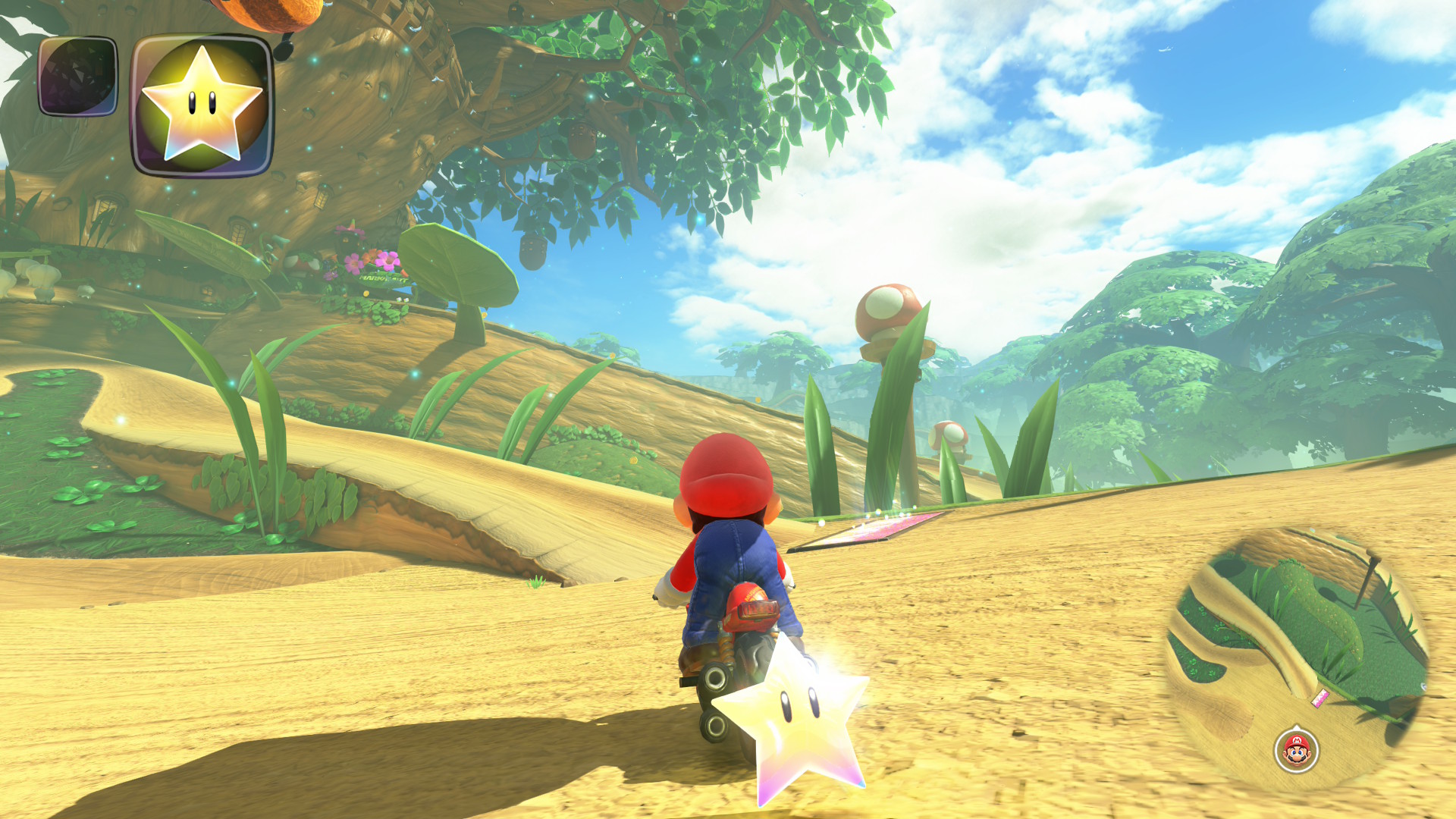
Mario Kart World also has an active day-night cycle and dynamic weather to accompany each track, transforming the atmosphere of each depending on the time of day in-game. Watching the sun rise and set while racing is a welcome distraction that I wouldn’t trade for the world. It takes about 24 minutes to a day to pass in-game, allowing players to experience day and night no matter how short a gaming session is. The addition of dynamic weather means tracks can become more slippery if it begins to rain, while driving at night limits visibility compared to during the day.

Items are now automatically placed behind you when you obtain them, alleviating the need to hold down a button to protect yourself. New and returning items vary in effectiveness, with items like Mega Mushroom, Hammer, and Ice Flower granting you the ability to take out multiple opponents, while the Coin Shell and Coin Box do very little to give players an advantage, except for boosting coin inventory. Existing items like Bullet Bill have been nerfed since Mario Kart 8 Deluxe, travelling much slower, while the buffed Golden Mushroom appears to give a much more noticeable and tide-turning boost.
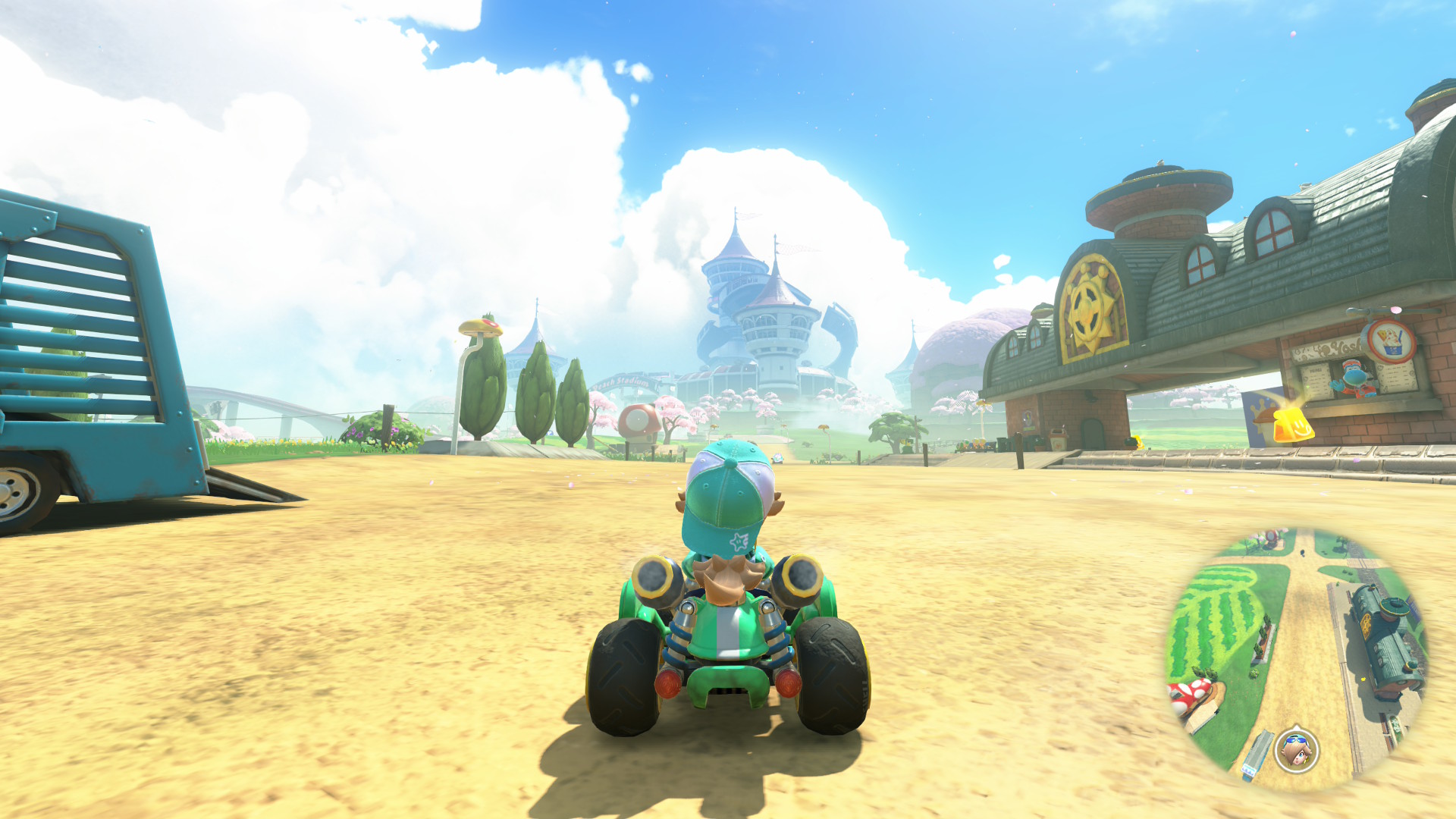
A Mario Kart staple, Grand Prix mode splits the incredible 32 tracks into 8 Cups to participate in. Completing these Cups rewards you with additional characters to add to the roster like Rosalina, Daisy, and King Boo to name a few. Yes, completing. You don’t even need to win the Cups to unlock these characters, which ultimately absorbs the enjoyment and thrill out of trying to place first in each cup across different CC modes. I don’t know if this was a move to create a more accessible progression system, but it forcibly lessens the incentive to complete every cup across 50CC, 100CC, and 150CC. Collecting coins during all aspects of the game unlocks new vehicles to add to your garage.

Knockout Tour, the newest attraction to the Mario Kart franchise, is a battle-royale mode of sorts, where racers holding up the rear are removed from the race as it progresses. This is undoubtedly the best mode in the 33 years since Mario Kart’s conception. Intwined with the extreme chaos of racing with 23 other players and the pressure of assuming the right position where you aren’t a major target in front or at risk of elimination at the rear, creates a captivating gameplay experience that isn’t for the light-hearted. While the mode exudes the merriment that coincides with a Mario Kart title, it is by far the most challenging mode, especially online. Even the most adept racers are susceptible to an early demise, as the 24 racers are usually driving so close together you could mistake them for a tin of sardines. One red shell could ruin your day.
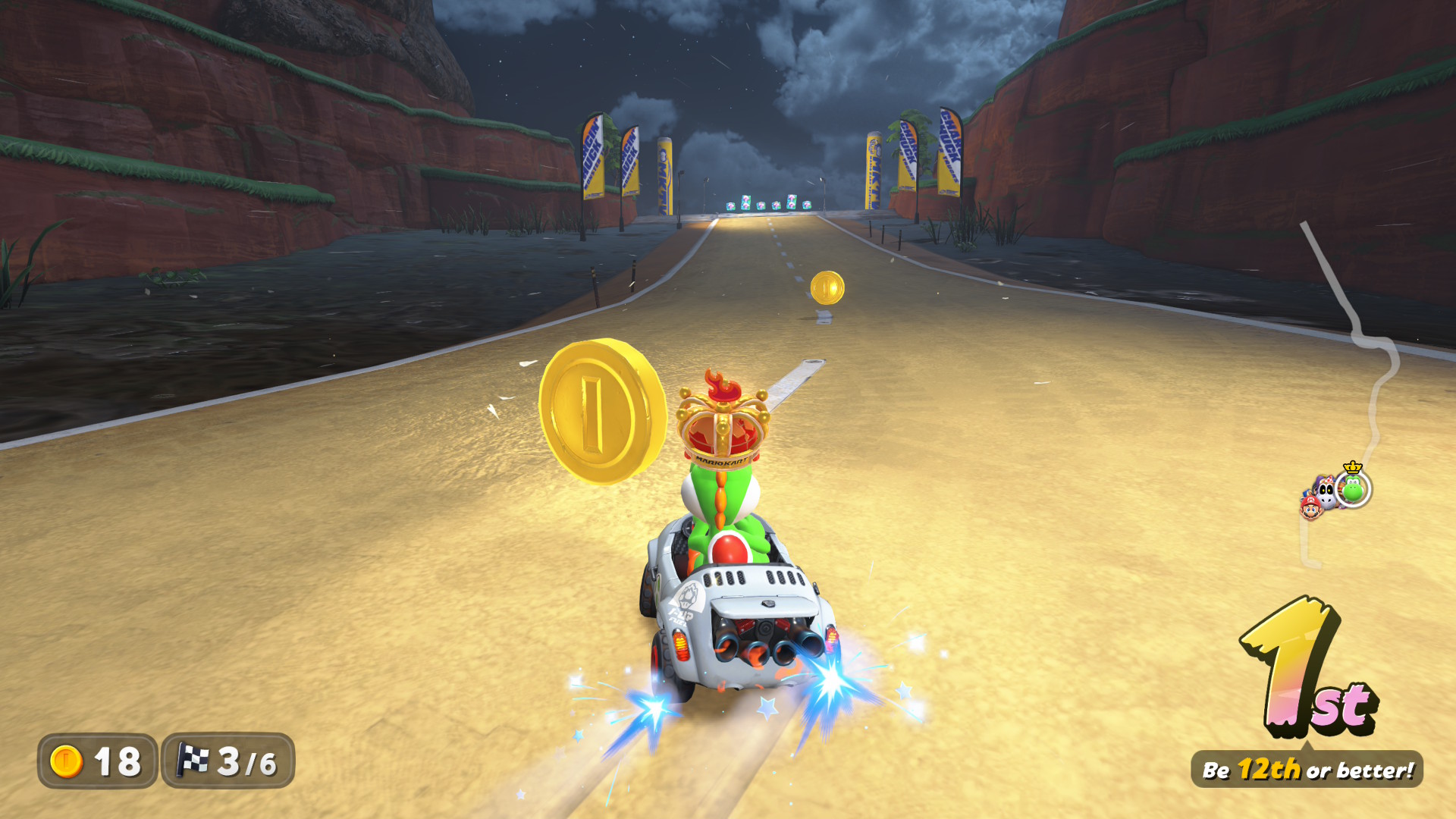
Mario Kart World harbours the series’ first open world, and unfortunately, feels empty and dull a majority of the time. In a mode called Free Roam, players can drive around freely on the island where the 32 tracks reside, completing mini-games, unlocking character outfits, and taking in the beautiful landscapes with Photo Mode. There’s not a lot to do in this open world, which, intently, was the main ‘gimmick’ of this Mario Kart game; it’s even in the title. Discovering new outfits for the character roster is exciting, but you can do that during races, so it never felt essential to the Free Roam mode. Interestingly enough, the mode itself can easily be missed as it’s not featured with the rest of the modes, but simply a hidden prompt in the bottom-right corner of the main menu.
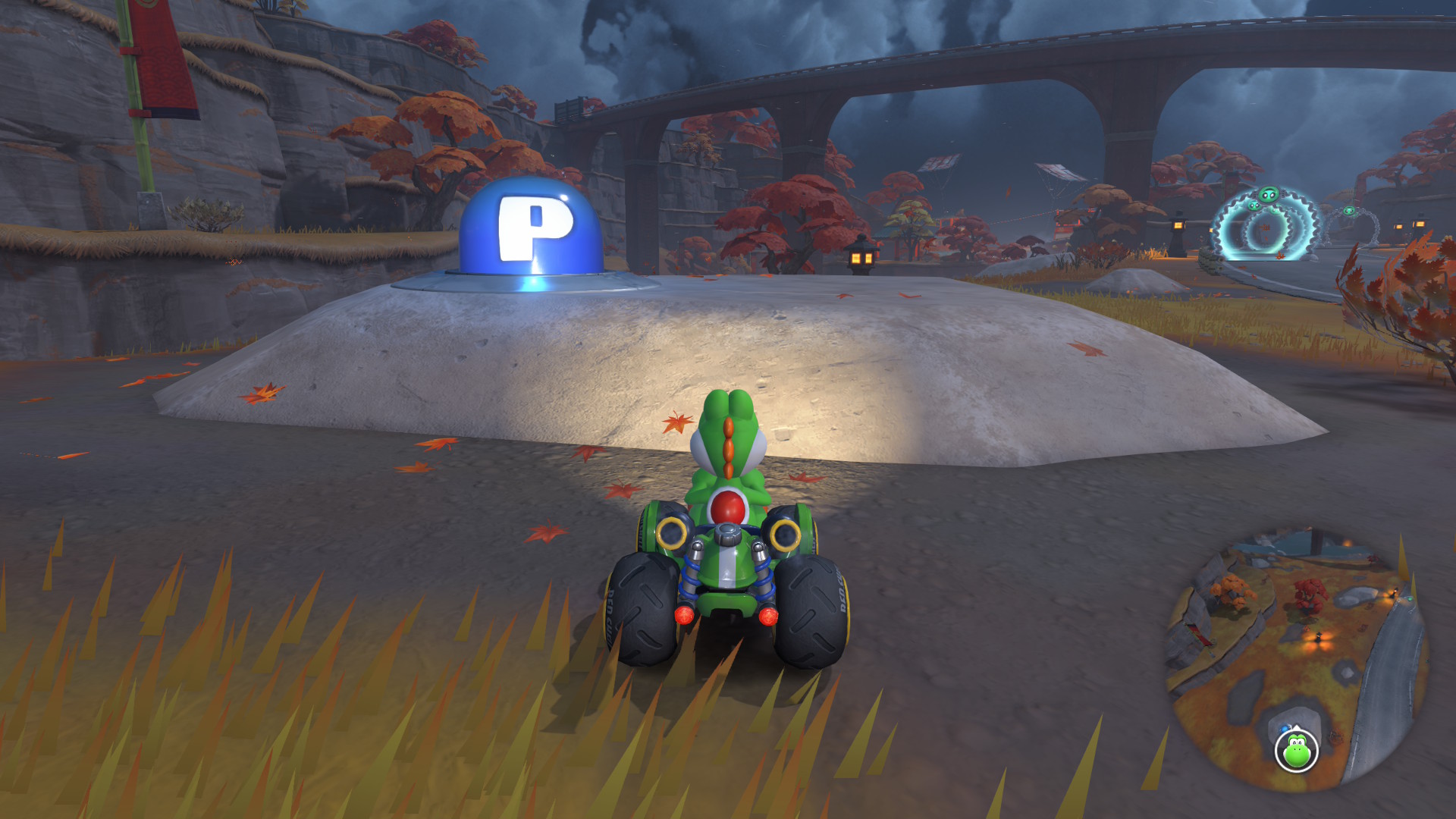
Players will find P-Switch mini-games around the world, which are timed missions that require you to navigate certain terrain, collect coins, and complete other timed trials. The rewards for these are stickers to customise your Karts, which not everyone will find worth the time investment, as you can only equip one sticker at a time. These P-Switch challenges are fun to an extent, but trying to find them in the vast, empty world can become laborious after a while.
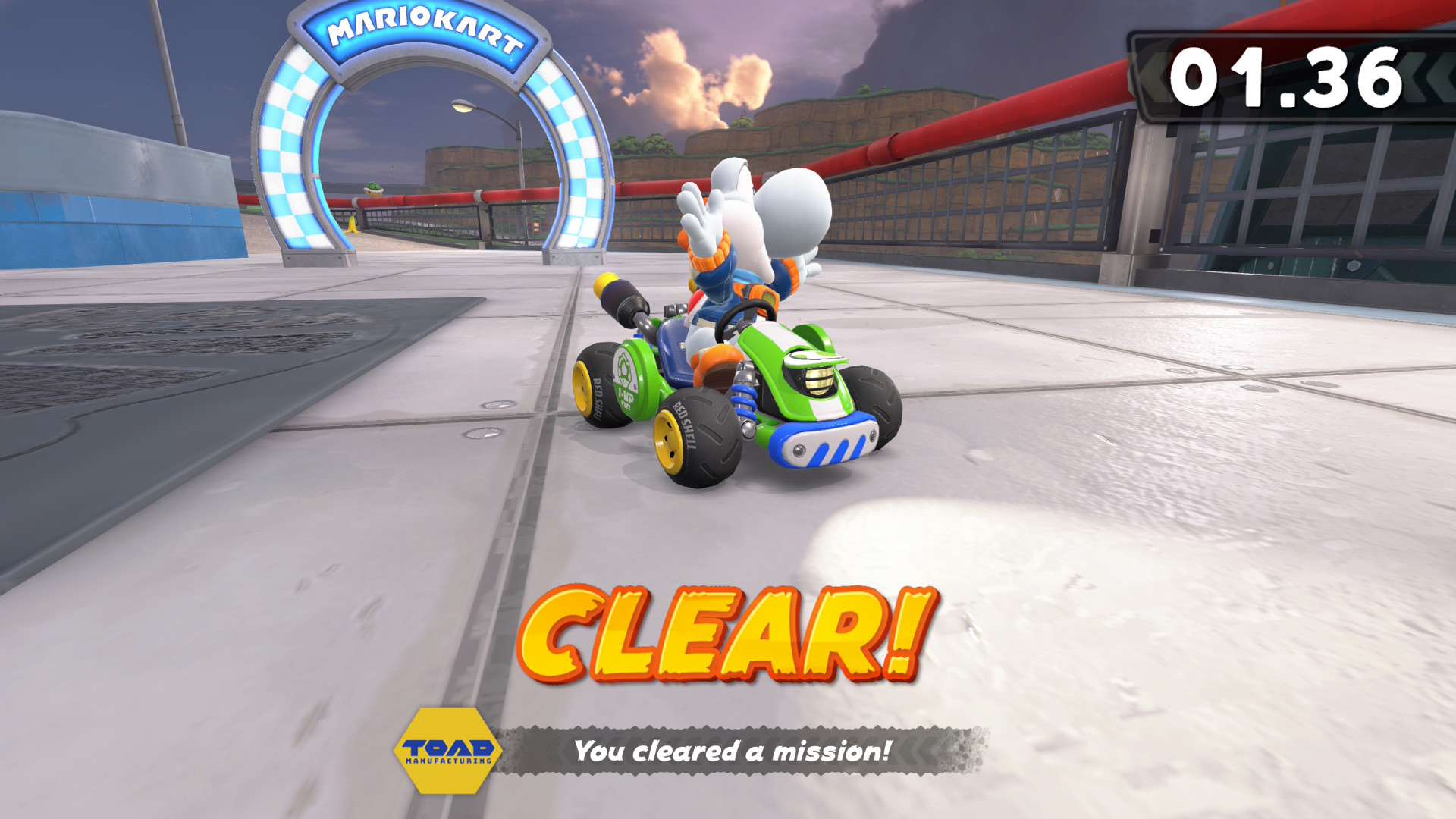
Tracks are “connected” in certain modes. Grand Prix mode joins four tracks together, while Knockout Tour connects six tracks together. However, these tracks are mostly connected by bland portions of road, lacking the flavour of Mario Kart World’s iconic tracks. I love the concept of connecting tracks, but the execution here is subpar, breaking the immersion and excitement of transitioning to the next track.
The sense of joy and exploration I wanted to feel in Mario Kart World was stripped from me after I realised there wasn’t much in between the track POIs in the open world. Outside of the tracks themselves, it honestly feels as desolate as Pokémon Scarlet and Violet’s open world – not one I would willingly explore in my spare time. Thankfully, if you aren’t a fan of stickers, you can veto Free Roam mode and focus on the well-executed modes that will provide hundreds of hours of enjoyment.

Battle mode makes its triumphant return with fan-favourite modes, including Coin Runners and Balloon Battle. I played hundreds of hours of these modes on Mario Kart DS twenty years ago, and even all these years later, they still hit the spot. While World doesn’t change up the formula of these two modes, they feel as thrilling as ever.

Mario Kart World’s music is led by composer Atsuko Asahi and features 200 bangers. The tracks are new, old, and remixed, not only from past Mario Kart games, but also from iconic games from the Super Mario franchise. Upon booting up Mario Kart World, you are met with the enthralling Theme Song (below), which serves as the perfect introduction to the bold and atmospheric soundtrack heard throughout the game.
I’m excited to see what content is added to Mario Kart World over its lifespan. Mario Kart 8 Deluxe is a completely different game from its initial launch after an overwhelmingly generous amount of content updates through the Booster Course Pass, adding 48 tracks and 8 characters to the game post-launch. While no roadmaps or updates have been announced for World, I’d be surprised not to see a Donkey Kong Bananza, Zelda, and/or Metroid content added to the game soon.

As a Mario Kart game, Mario Kart World easily stamps its footprint as one of the best games in the series. However, as a Mario Kart game with the open world being a highlighted feature, it misses the mark. I would still fully recommend this game to every Nintendo Switch 2 owner, just don’t expect a compelling open world to explore.
MAIRO KART WORLD REVIEW
Mario Kart World is a solid entry into the Mario Kart series, but it is still outshone by its predecessor in many ways. While the world in Mario Kart World feels barren, the entertaining and chaotic gameplay we love from the series may well be at its peak.
PROS
-
The best Mario Kart has sounded and looked
-
Knockout Tour is the best mode of the franchise
-
Performance is perfect at a stable 60fps
-
Day-night cycle and dynamic weather
-
The best Mario Kart soundtrack to date
-
Cow
CONS
-
The main attraction, the open world, is dull
-
The connection of tracks feels underbaked
-
Very little progression/unlocks compared to the previous title
Reviewed on Nintendo Switch 2. A review code was provided by the Publisher for purposes of this review.
